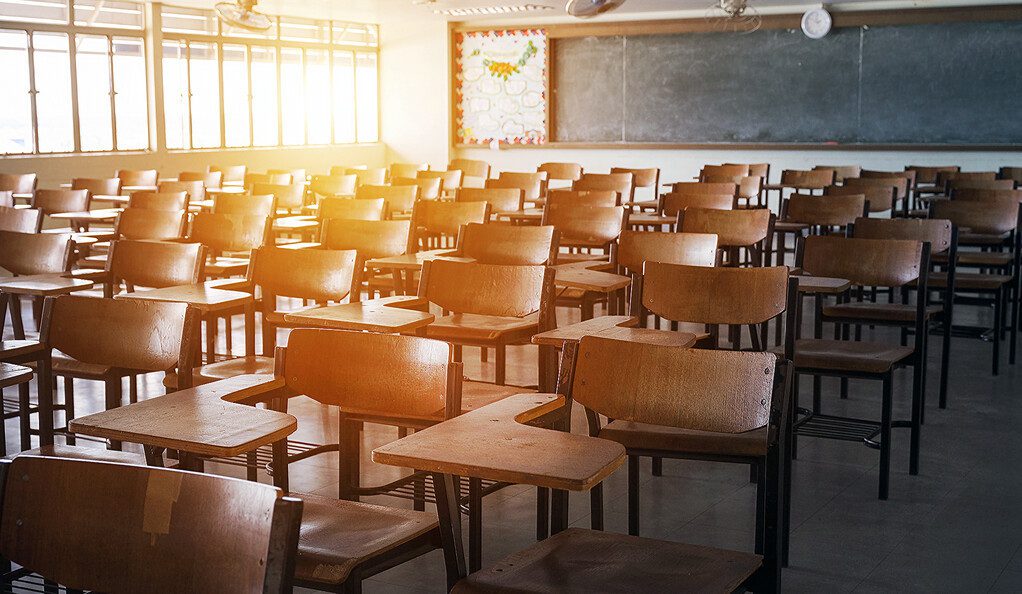New Haven Public Schools expect increase in student homelessness
With the Connecticut Department of Education predicting a 25 percent rise in student homelessness across the state, NHPS officials point to rising evictions and lack of affordable housing as causes.

Yale News
The number of students experiencing homelessness in New Haven public schools is likely to rise this school year.
There are currently 574 displaced students in the New Haven Public Schools district, meaning the district is likely to exceed last year’s total of 620 displaced students, according to Abigail Rivera, a care coordinator for NHPS. These numbers mirror a larger state-wide uptick – last month, the Department of Education projected that the number of students experiencing homelessness in Connecticut could increase up to 25 percent in 2023. Rivera said that she expects higher rates of student homelessness to persist over the next three to four years.
Rivera sees the rise in student homelessness as a symptom of a larger housing crisis in the city. After the end of the state-wide eviction moratorium implemented during the COVID-19 pandemic, Rivera said she has worked with an increasing number of families who became homeless after getting evicted. The extremely low housing unit vacancy rates in New Haven – currently hovering around 1.4 percent – means that after eviction, it is difficult for families to secure new housing.
“I have parents with Section Eight vouchers that are active, ready to move into a unit, but simply cannot find housing,” Rivera said. “That’s probably one of the recurring themes that I’ve heard throughout this year.”
Rivera also identified New Haven’s lack of shelter beds as a problem for homeless youth. Limited family units in city shelters also means that sometimes families have to split up. Rivera recalled working with one family where the father stayed in a men’s shelter while the mom had to stay somewhere else.
According to Kelly Fitzgerald, senior director of financial stability for United Way of Greater New Haven, out of the 175 shelter beds in the greater New Haven area, 40 are reserved for families. There are 51 families currently on the waiting list for a shelter bed.
“We don’t have enough space for family units in our shelters,” Rivera said. “For our children, it would be much better to have families stay together.”
In Connecticut, homeless students are protected under the McKinney-Vento Homeless Assistance Act, which gives students the choice to continue their education at the school they were attending before becoming homeless even if they are no longer living in the district.
Danny Diaz, coordinator of parent engagement for New Haven Public Schools and McKinney-Vento liaison, stressed that many different types of students are covered under the McKinney-Vento act – not just those who fit traditional conceptions of homelessness. For instance, McKinney-Vento covers unaccompanied youth, many of whom come to New Haven from Latin America, he said. Diaz also collaborates with local nonprofit Integrated Refugee & Immigrant Services to help refugee students. Recently, he has worked with a few students displaced by the war in Ukraine.
Many of the families Diaz works with are considered to be “doubled up,” which means they are living with other people, often friends or family members, due to loss of housing.
“To many people [being “doubled up”] is not considered homelessness, but it is homelessness, because they don’t have a home,” Diaz said. “They’re at the mercy of the person that’s taking them in.”
According to statistics compiled by Rivera, in the 2022-2023 school year, 18 percent of new students who qualified under McKinney-Vento were living in shelters. 21 percent of new students were living in hotels and three percent were unsheltered. The majority of the students protected under McKinney-Vento were classified as “doubled up.”
January was a particularly busy month, with 67 new students identified under McKinney-Vento in the district.
“I hope that the community at large really, truly understands the dynamics of homelessness,” Diaz said. “It’s not just living in a car, or sleeping on a park bench. There are layers to homelessness – it’s about putting students at risk when they don’t have a safe place to sleep. A safe place to sleep is not just having a bed at a location, it’s about how long will they have that bed? And could it change overnight?”
For students who lose housing and are forced to move out of New Haven, the district covers transportation costs to school. The district also works to provide students with coats, materials for schools, backpacks and sleeping bags. Schools collaborate with partner organizations including the faith-based non-profit Christian Community Action, the New Haven Pride Center and the homeless shelter Columbus House to connect students with additional resources.
Diaz attributes part of the recent increase in unhoused students to an underreporting of homelessness during the pandemic. While classes were virtual, Diaz said it was difficult to identify students who did not self-report their housing status to the district.
Adam Yagaloff, an attorney who previously worked with the Center for Children’s Advocacy’s Homeless Youth Advocacy Project, pointed to the fact that families with criminal histories or previous evictions face additional challenges in securing housing.
“You see families spending a lot of time moving around, doubled up and sharing responsibilities with other family members and friends because it’s just very difficult to get into a safe and stable place, especially if you’re dealing with poverty and other types of barriers,” Yagaloff said.
New Haven saw the largest increase in the number of students experiencing homelessness in 2017 when 64 students displaced by Hurricane Maria joined New Haven Public Schools.







